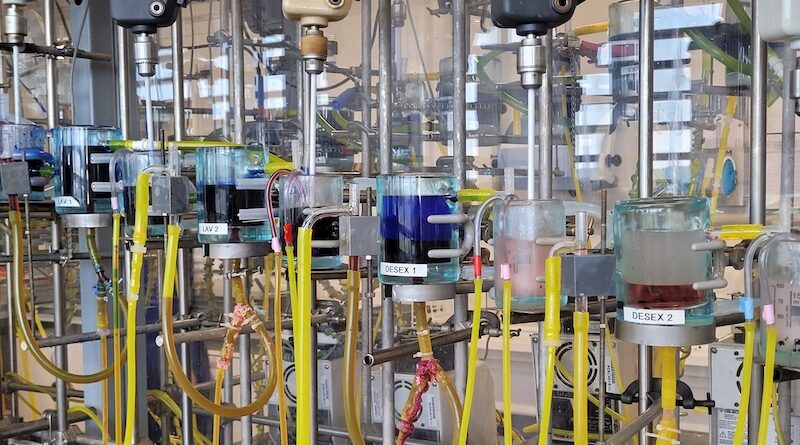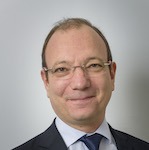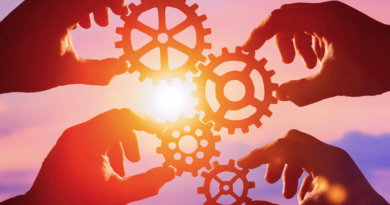
Recovering strategic metals for securing European supply
Guaranteeing the European Union’s (EU) strategic autonomy on raw materials is crucial for the green and digital transition: it is essential that Europe prioritizes the recovery of strategic metals to secure its supply chains and reinforce its energy independence.
Orano, as a nuclear fuel cycle company, masters the recovery of uranium for more than 40 years and is fully committed to the climate and to both a healthy and resource-efficient world. Its new activities in strategic materials are supported by the expertise and know-how acquired by the company. This is a clear example of cross-cutting synergies between different sectors: Orano has a role to play to industrialize complex and sustainable solutions to guarantee the EU industrial sovereignty and the security of the supply of strategic raw materials.
Strategic metals are essential components in many high-tech applications, including renewable energy technologies, electric vehicles, and advanced electronics.
However, the production of these metals is often concentrated in a few countries, making Europe dependent on imports and vulnerable to supply disruptions and price fluctuations.
The EU is heavily dependent on imports of strategic metals, with a strong dependence on 34 critical raw materials, according to the European Commission1. Eastern Asia countries are dominant producers of many of these metals, accounting for 80% of the global production of rare earth elements2 for example. This dependence on a single supplier poses a major risk to Europe’s strategic interests.
Europe can free itself from this dependence by developing a recycling industry. The Critical Raw Materials Act, recently published by the European Commission, should encourage the development of a comprehensive strategy for the recovery and recycling of strategic metals from domestic sources, including end-of-life products and industrial waste. This will require significant investment in research and development, as well as in the deployment of innovative technologies and infrastructures.
Orano’s efforts for the recycling of strategic materials and the relocation of industries in the EU territory are fully in line with its commitment formulated in 2020 to “Develop know-how in the transformation and control of nuclear materials for the climate, for a healthy and resource-efficient world, now and tomorrow”.
Orano offers a three-pronged response to the European Union’s dependence on strategic materials, drawing on its recognized expertise in the nuclear fuel cycle.
Firstly, Orano aims to recycle up to 20% of end-of-life lithium-ion batteries from electric vehicles in Europe by 2030. The group is leveraging and adapting its expertise in nuclear fuel recycling to develop an innovative low-carbon process to recover and purify the valuable materials contained in used battery modules (cobalt, manganese, nickel, lithium, graphite) for reuse in new components. Orano aims to become a leader in the recycling of lithium-ion (Li-ion) electric vehicle batteries in France and in the European market thanks to a new comprehensive hydrometallurgical process for the efficient recovery of materials of interest, which should be operational by 2025.
Secondly, Orano is also investing in promising projects to re-establish an industrial base for the production of high-performance sintered magnets in Europe, in order to reduce our dependence on Eastern Countries producers. The group has know-how in powder metallurgy, sintering, and the effective management of risks related to hazardous materials and a controlled atmosphere. These skills are of key importance in the customer relationship management value chain.
Thirdly, Orano also aims at recycling platinum group metals (PGMs) from spent nuclear fuel. Today, the supply of PGMs is concentrated in Russia (palladium) and South Africa. Orano believes that significant quantities of PGMs could be recovered at its La Hague site in France, significantly reducing the security of supply risk for EU supply chains.
The industry now needs a strong political signal and an appropriate regulatory framework to bring about a circular economy and a European value chain.
Ending dependency means that the regulations that will be discussed in the coming months (Net Zero Industry Act, Critical Raw Materials Act) must include two elements:
· Sources of funding. The recycling sector can start with the scraps linked to the production of batteries or with permanent magnets. However, until recently, and without any regulatory incentive, those strategic materials have been exported outside the EU or destroyed rather than being recycled in the EU territory – which can be considered a more expensive option. The new obligations set out in the Batteries regulation should progressively change this situation. But there is still a long way to go when it comes to rare earth elements: according to the ERMA Action plan3, less than 1% of rare earth elements are recycled in Europe. It is, therefore, necessary to provide financial support for the start-up of the recycling sector so that it can become profitable in the years to come and achieve the 15% objective set in the Critical Raw Materials Act, if not more.4
· A regulatory framework that promotes circular economy. The proposal for a regulation on the European Critical Raw Materials Act is a good step in the right direction. However, it is necessary to integrate binding collection and recycling rates. Otherwise, a lack of visibility for the sector will limit investments. In parallel, access to waste is crucial. End-of-life products must therefore be able to circulate freely for recycling in the EU, facilitating the use of secondary raw materials and valorizing by-products.
Orano is ready to contribute to these major developments and to provide its expertise at the European level. Investing in the relocation of strategic industries and in reinforcement of circular economy is key to strengthening our energy transition towards a carbon-neutral economy.
________________________________________________________________________
Photo: Center for Innovation in Extractive Metallurgy (CIME) of Orano. Bessines-sur-Gartempe.
1 Critical Raw Materials Act (europa.eu)
2 Ibid.
3 Rare Earth Magnets and Motors: A European Call for Action. A report by the Rare Earth Magnets and Motors Cluster of the European Raw Materials Alliance
4 According to the CEPS, moving beyond 2030, the share of future demand potentially covered through recycling increases, and in 2050 we estimate it could range between 24 % and 48 %. Report on Developing a supply chain for recycled rare earth permanent magnets in the EU – Challenges and opportunities




